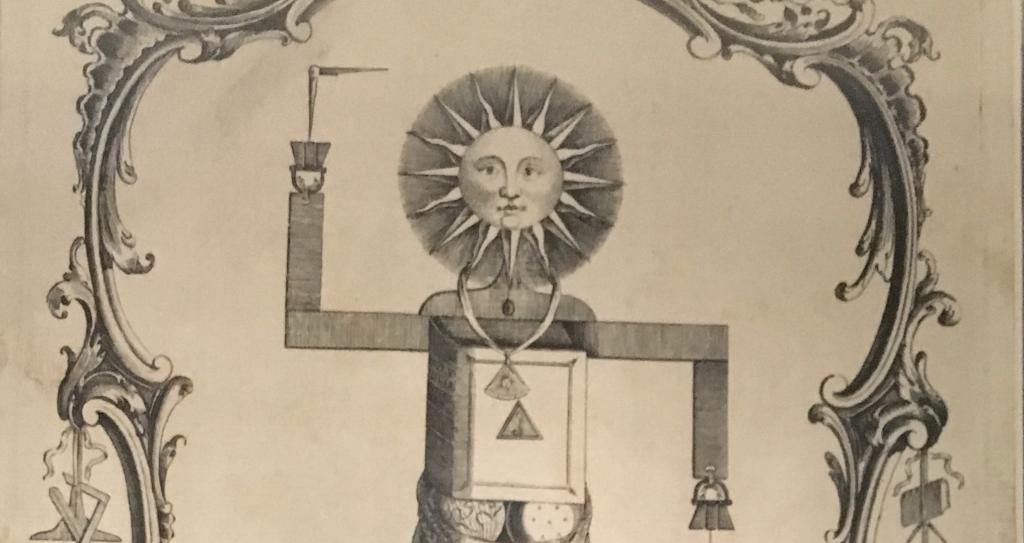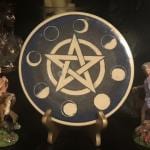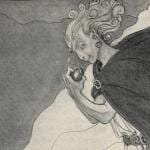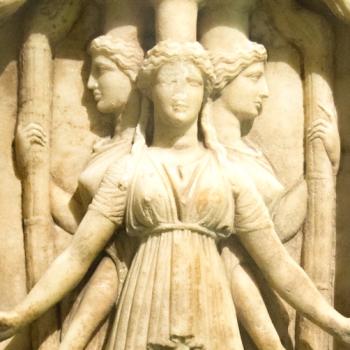Those who practice monotheistic faiths are often called “People of the Book.” Witches have never been people of a book, instead, we’ve traditionally been “people of the books.” I think that’s changed a little bit over the last few years with the rise of the internet, but the majority of us remain avid readers, and the books we read when starting out often have an outsize influence on our beliefs and practices.
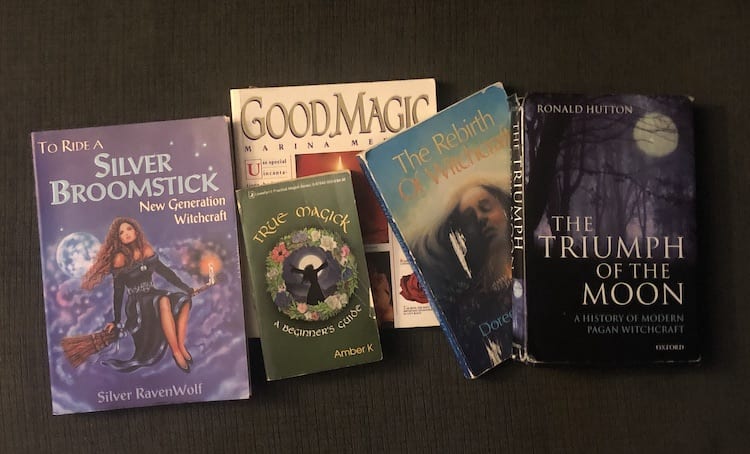
What follows are five books that have changed my life in profound ways. They’ve influenced how I practice my Craft and look upon its history. Some of them taught me how to do magick, and I reread one of them so many times that you could make the argument that Silver Ravenwolf was my first teacher. Most of them are pretty well known, but one of them I have yet to encounter on a fellow Witch’s bookshelf.
To Ride a Silver Broomstick by Silver Ravenwolf
Back in 2012 the Huffington Post asked the Pagan Community to help put together a list of 25 Essential Pagan Books. The list was full of “bestsellers” such as The Spiral Dance, Wicca: A Guide for the Solitary Practitioner, and Drawing Down the Moon, (it also contained a few books I had never heard of, I thought it was a pretty weird list.) Most conspicuous in its absence was Silver Ravenwolf’s To Ride a Silver Broomstick, one of the bestselling Witchcraft related texts of all time. I remember asking about that, and getting shot down by anyone and everyone who had an opinion on the topic.
Like many Pagans under 50, Silver Ravenwolf had a tremendous impact on my life, and in my case it was Broomstick that was responsible for most of it. When it comes to practical, easy to do, effective magick there are few better books out there. (Contrast Broomstick with Buckland’s Practical Candle Magic for instance, every piece of “practical” magic in Buckland’s book calls for twenty different candles-not possible on my budget back then.)
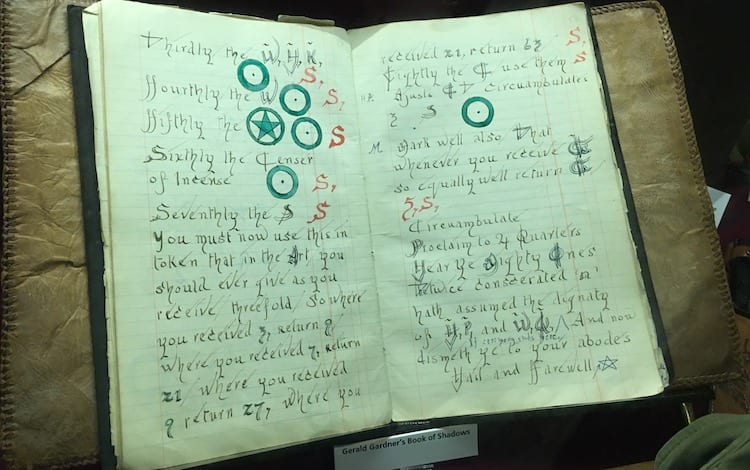
In 1995 I practically lived in the pages of Broomstick and must have read it ten or twelve times that year alone. Silver’s portrait of Witchcraft was the one I had been waiting for. It was social, transformative, magickal, and Silver’s views on deity nearly mirrored my own. (Seriously, click on that link, Silver makes much more sense than Buckland or Cunningham.) In short, I wouldn’t be here today without her work.
Triumph of the Moon by Ronald Hutton
I was working at Barnes and Noble in 1999 when Triumph was originally released in hardcover, and was anxiously anticipating its release. I think my store had a copy show up a month before its release date and I remember eagerly devouring the book over the next couple of days. Several months after its release there were a lot of people who began expressing their displeasure with it because it didn’t tell the story they wanted to read.
I get wanting Modern Witchcraft to go back hundreds (if not thousands) of years in an unbroken chain into pagan antiquity, but that’s just not the case. Instead, Modern Pagan Witchcraft (to use Hutton’s turn of phrase) is a combination of several different esoteric elements, each unique and spiritually uplifting in its own way. Triumph is a treasure trove of information, and over the course of the last eighteen years I’ve read it several dozen times, and with each reading I’ve discovered something new.
I had a friend recently say that Hutton’s book hasn’t aged well, and I have to disagree. The first half of the book dealing with the elements that went into Modern Witchcraft’s creation are a historical tour de force, and it’s hard to argue with anything there. Do some of us quibble over Hutton’s (exceedingly polite) dismissal of Gerald Gardner being initiated into a the New Forest Coven in 1939? Yes, but that’s one small part of a much larger work. Triumph remains essential reading, and it has inspired me to go back and read Fortune, Crowley, Gardner, Leland, Swinburne, Murray and dozens more.
True Magic: A Beginner’s Guide by Amber K
My copy of True Magic looks much different than the versions of today. It was the original $3.99 mass market paperback version, and I remember hanging on every word of it back in 1994 when I first picked it up. I think True Magic had to have been my third or fourth Witch book, and it was just packed with so much fabulous magickal stuff that I couldn’t set it down for at least a month. Luckily, it wsa small and I could fit it in my pocket which made carrying it around so much easier.
There’s a small bit in the book about Amber K and her circle going into a cave at night and chanting and making figures of the Goddess out of clay, and it totally blew my mind when I was young. It was just what I wanted Witchcraft to be so badly when I was young that I probably read those two paragraphs twelve dozen times. Amber K’s directions on how to make one’s own robe has always resonated with me too for whatever reason. It was like someone was trying to tell me “you can do this, it’s not that hard buddy.”
True Magic is not an advanced text, but for someone just starting out on the magickal path it’s completely FULL of magickal stuff. Looking through it tonight in the course of writing this article I was delighted to see just how much stuff there really is in it. It’s all rather basic and simple, but basic and simple is really where we should start. During this period of time in my life I had a friend learning about the Kabbalah and he was trying to start with The Book of Abramelin , and while it’s great to go to the source of things, sometimes beginning with something easily understood makes a lot more sense.
Good Magic by Marina Medici
I’m not sure I’ve ever run into anyone who has mentioned Marina Medici’s Good Magic, but it was an absolute favorite of mine for a couple of years. Unlike the other books on this list, I’ve committed very little of Medici’s writing to memory, instead it’s the illustrations and photographs that made Good Magic so memorable. Most Witchcraft books have very little in the way of pictures, but Good Magic is laid out much like a junior high school textbook, complete with full color pictures on every other page.
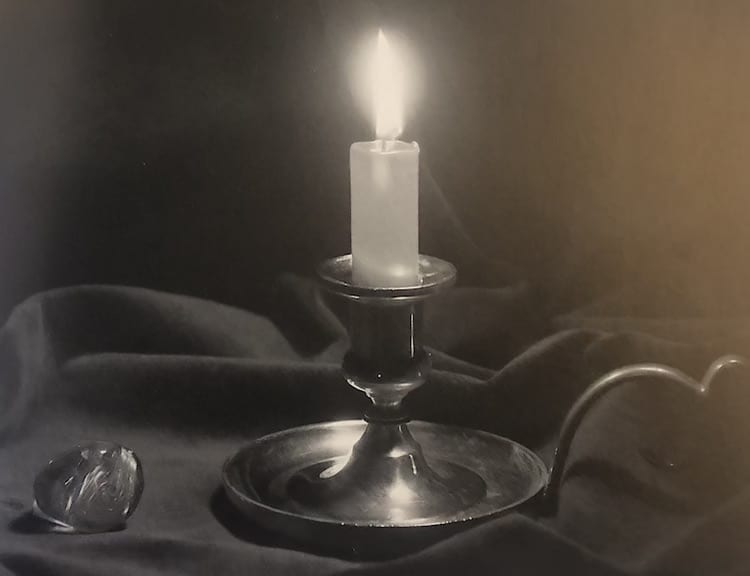
As a “Witch alone” at the start of my journey, I was desperate to see what Witchcraft might look like, and Good Magic provided those images. And those images weren’t just of herbs or burning candles, there were photos of the natural world which depicted it in such a way to make it look even more magickal. Doesn’t every view of the ocean include a rainbow on the horizon? Well it does in the world of Good Magic.
Not every image in the book has aged particularly well; there are photos of guys with feathered-hair looking like they came straight off a Harlequin Romance cover from 1988 and soft cotton bath robes seem to be the most common form of ritual wear . . . but it was the 80’s! Unlike most of the other Witchcraft books I was reading in the early 90’s Good Magic seemed to have no interest in deity and the word Wicca never shows up once. In some ways it feels like a precursor to the aesthetic Witchcraft books that have become wildly popular on outlets like Instagram and stores like Urban Outfitters.

The Rebirth of Witchcraft by Doreen Valiente
The greatest Witch memoir ever written (and that will probably ever be written) is Doreen’ Valiente’s The Rebirth of Witchcraft. Who better to chronicle the early Witchcraft revival in England than someone who was there for practically every minute of it? She worked with Gerald Gardner. She worked with Robert Cochrane. She wrote some of the best early books on Witchcraft, along with classic pieces such as The Charge of the Goddess. Doreen saw it all, did it all, and wrote much of it. She also continually looked to further her Craft and wasn’t averse to picking up new magickal ideas or growing as a person.
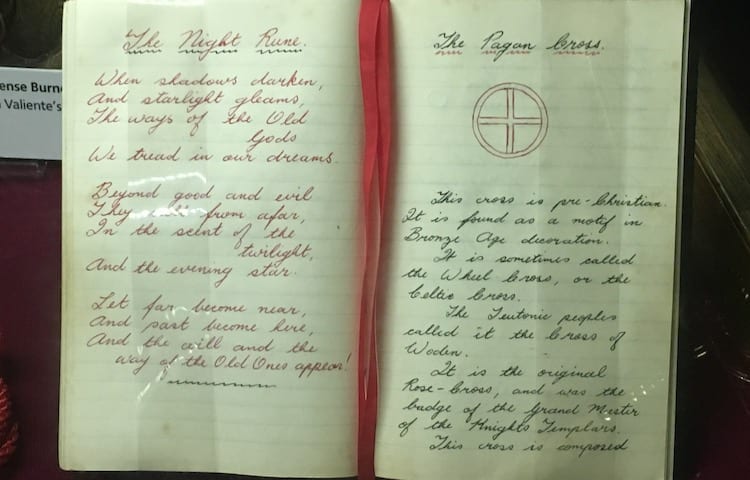
Rebirth was my first “history” book and I instantly fell in love with it. Not only did it introduce me to characters like Gardner and Cochrane, it shined a light on on ritual and magick, and helped to shape me as a Witch. When Valiente describes a ritual it’s like being there so vividly does she describe the scene and the cast of characters present. Even now when I go back and reread things in Rebirth I find myself getting stuck on the ritual bits and contemplating how to add them to my own rites.
One of the things that’s most surprising me today about Rebirth is just how much historical information it contains. Doreen wrote all sorts of things down as they happened or as information was given to her, and the result is a tour de force of early Witch history. When writing about Operation Cone of Power in my book Transformative Witchcraft it’s Doreen’s account (given to her by Gerald Gardner) that was the most useful (even more so than Gardner’s brief mentions of it in his books).
I hope that whatever you’ve read over the years resonated just as powerfully with you as these books do with me!


